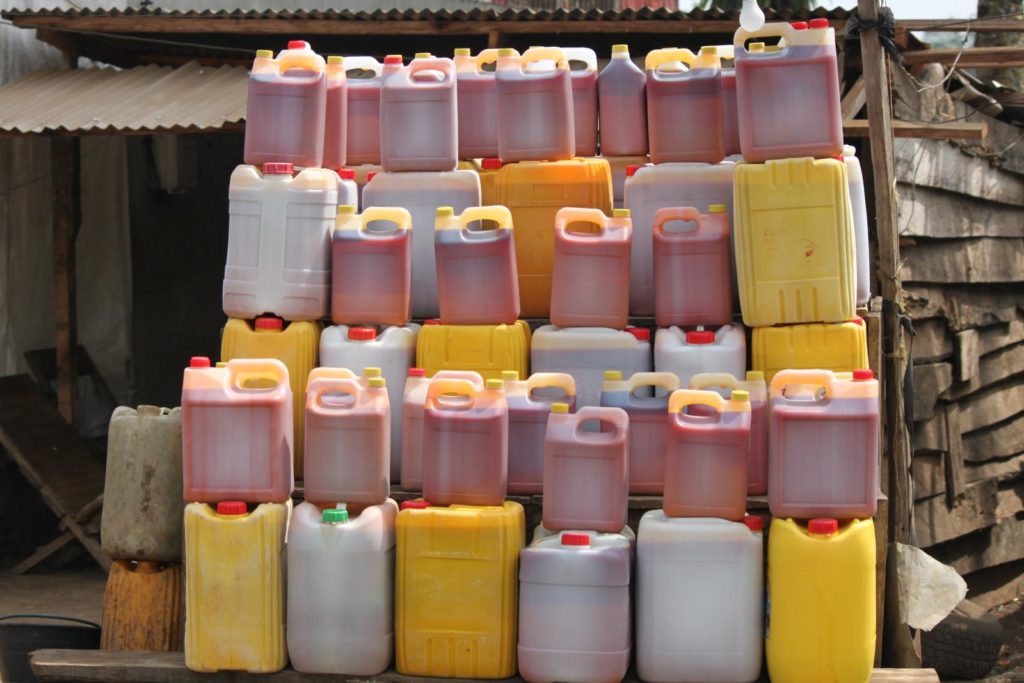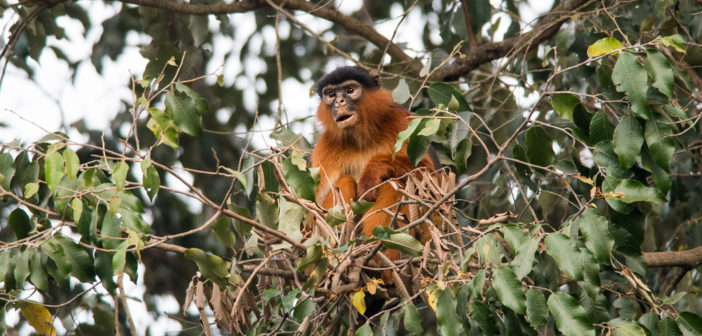A new study in the journal PNAS (Proceedings of the National Academy of Sciences of the United States of America) found very few possible areas of future oil palm cultivation in Africa that were not also areas of high conservation priority for primates.
Most palm oil cultivation currently occurs in Southeast Asia, and its devastating effect on wildlife, particularly orangutans, has been widely publicized. It has been argued that palm oil demand will continue to rise drastically as populations grow, and that the next step to meet that demand will be widespread expansion of oil palm cultivation into Africa. With this prediction in mind, a team of researchers hoped to identify areas of Africa which were what they called “areas of compromise,” meaning that they were both suitable for oil palm cultivation and unimportant for primate conservation.

Palm oil stacked in jugs, Cameroon. Image credit: Carsten ten Brink, CC BY-SA 3.0
To accomplish this, researchers first created a map of “cumulative primate vulnerability” in Africa, using data on the distribution of all 193 African primate species and their threat status. They then compared this map with one of oil palm suitability in Africa, generated from the Harmonized World Soil Database and using such land characteristics as elevation and soil quality.
The unfortunate result was that the maps were strikingly similar. The areas of primate vulnerability largely overlapped with those of oil palm suitability, confirming the grave threat posed to Africa’s already threatened primate species by potential future oil palm cultivation.
That threat isn’t confined to primate species. The researchers chose data about primates in order to make predictions about the overall threat to biodiversity in general, because of the important role primates play in ecosystems and the fact that their their diversity correlates with overall biodiversity.

Burnt forest as a result of palm oil cultivation in Indonesia. Photo credit: Wolf Clifton – Animal People, Inc.
The authors conclude that “Reconciling future oil palm development and primate conservation in Africa will be very challenging,” especially if palm oil demand skyrockets not only for use as a cooking and food product, but also as a result of future demand for biofuel. They note that one potential way to alleviate the negative impact of palm oil cultivation in Africa would be to develop ways to intensify crop yields, such as using higher-quality seeds and breeding technologies. They also point to the importance of campaigns that help consumers make the connection between their everyday purchases and subsequent environmental outcomes.
Read the entire article here.
Reference:
Strona, G., Stringer, S. D., Vieilledent, G., Szantoi, Z., Garcia-Ulloa, J., & Wich, S. A. (Aug 2018). Small room for compromise between oil palm cultivation and primate conservation in Africa. Proceedings of the National Academy of Sciences.
Featured image: A Temminck’s Bay Colobus, one of Africa’s many endangered primates. Image credit: Allan Hopkins, CC BY-SA 3.0





